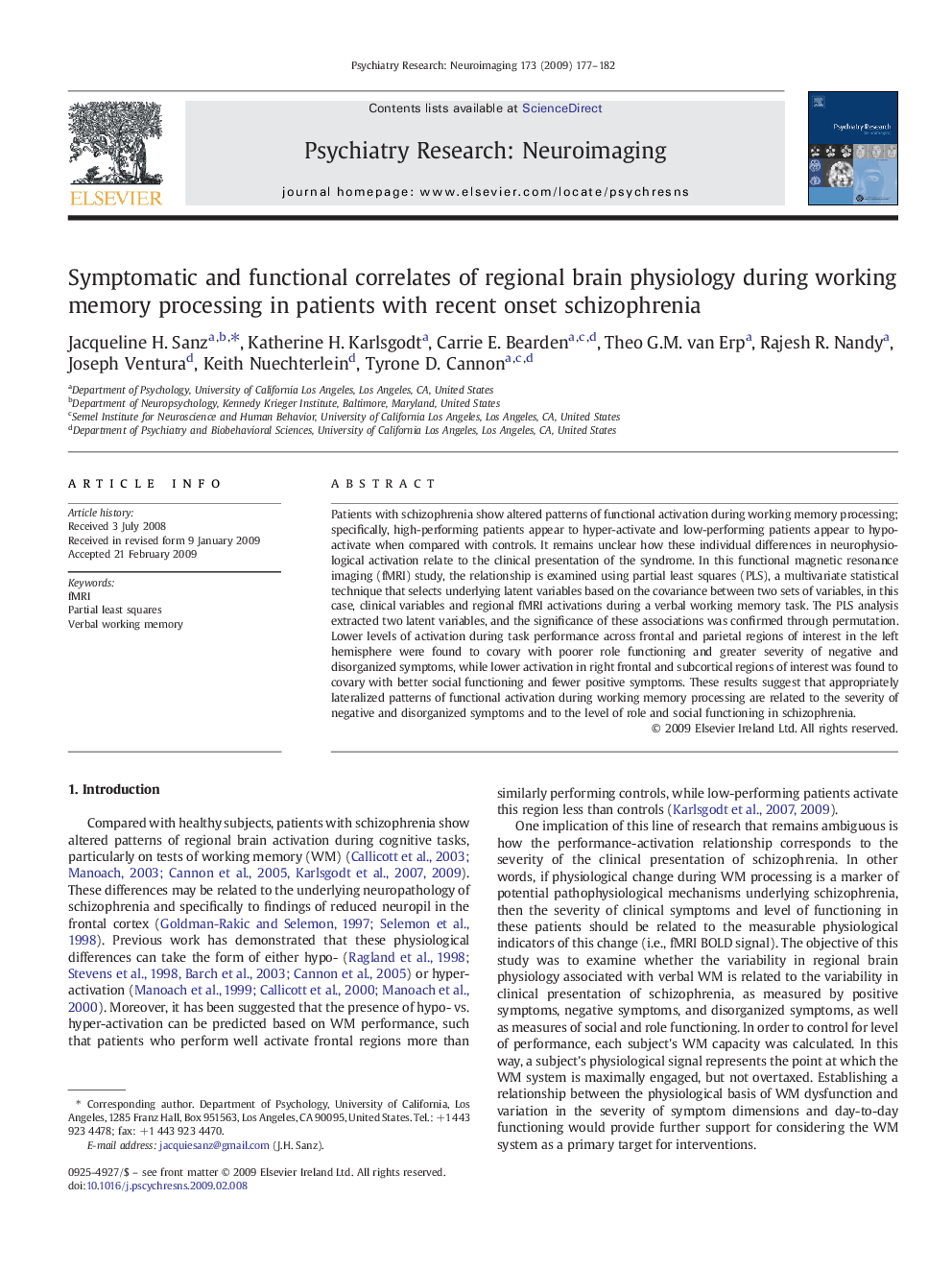| Article ID | Journal | Published Year | Pages | File Type |
|---|---|---|---|---|
| 334834 | Psychiatry Research: Neuroimaging | 2009 | 6 Pages |
Patients with schizophrenia show altered patterns of functional activation during working memory processing; specifically, high-performing patients appear to hyper-activate and low-performing patients appear to hypo-activate when compared with controls. It remains unclear how these individual differences in neurophysiological activation relate to the clinical presentation of the syndrome. In this functional magnetic resonance imaging (fMRI) study, the relationship is examined using partial least squares (PLS), a multivariate statistical technique that selects underlying latent variables based on the covariance between two sets of variables, in this case, clinical variables and regional fMRI activations during a verbal working memory task. The PLS analysis extracted two latent variables, and the significance of these associations was confirmed through permutation. Lower levels of activation during task performance across frontal and parietal regions of interest in the left hemisphere were found to covary with poorer role functioning and greater severity of negative and disorganized symptoms, while lower activation in right frontal and subcortical regions of interest was found to covary with better social functioning and fewer positive symptoms. These results suggest that appropriately lateralized patterns of functional activation during working memory processing are related to the severity of negative and disorganized symptoms and to the level of role and social functioning in schizophrenia.
